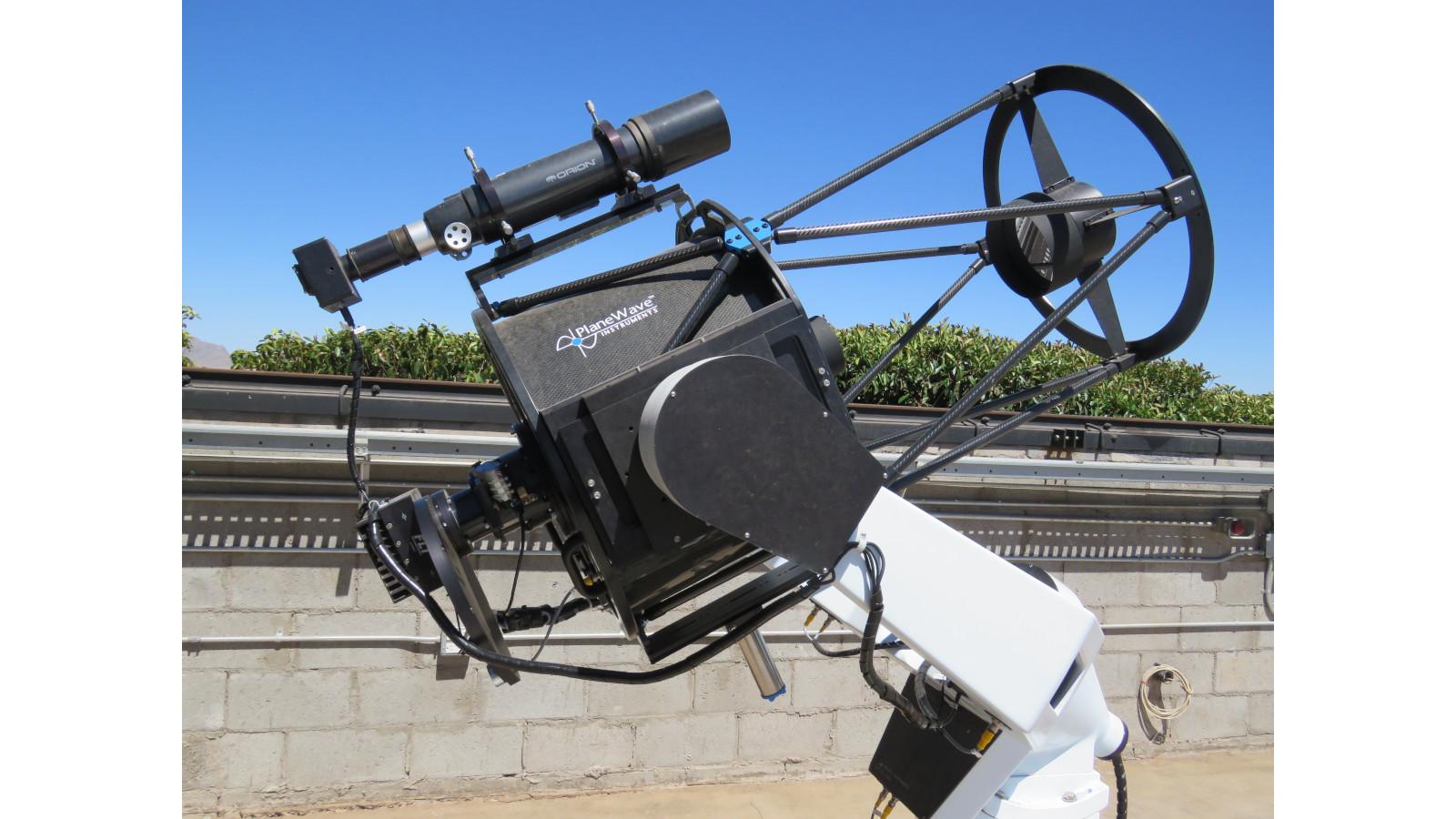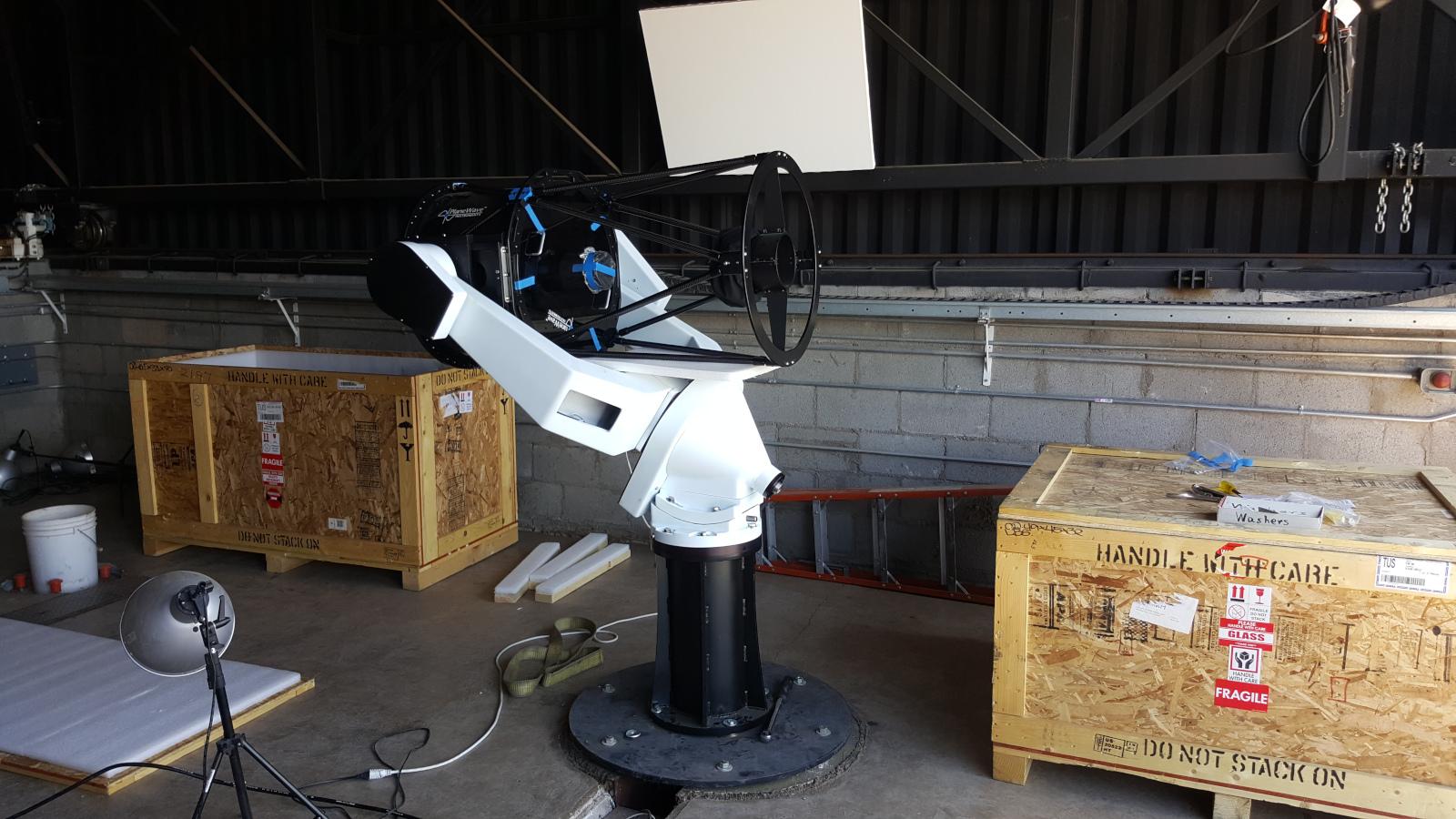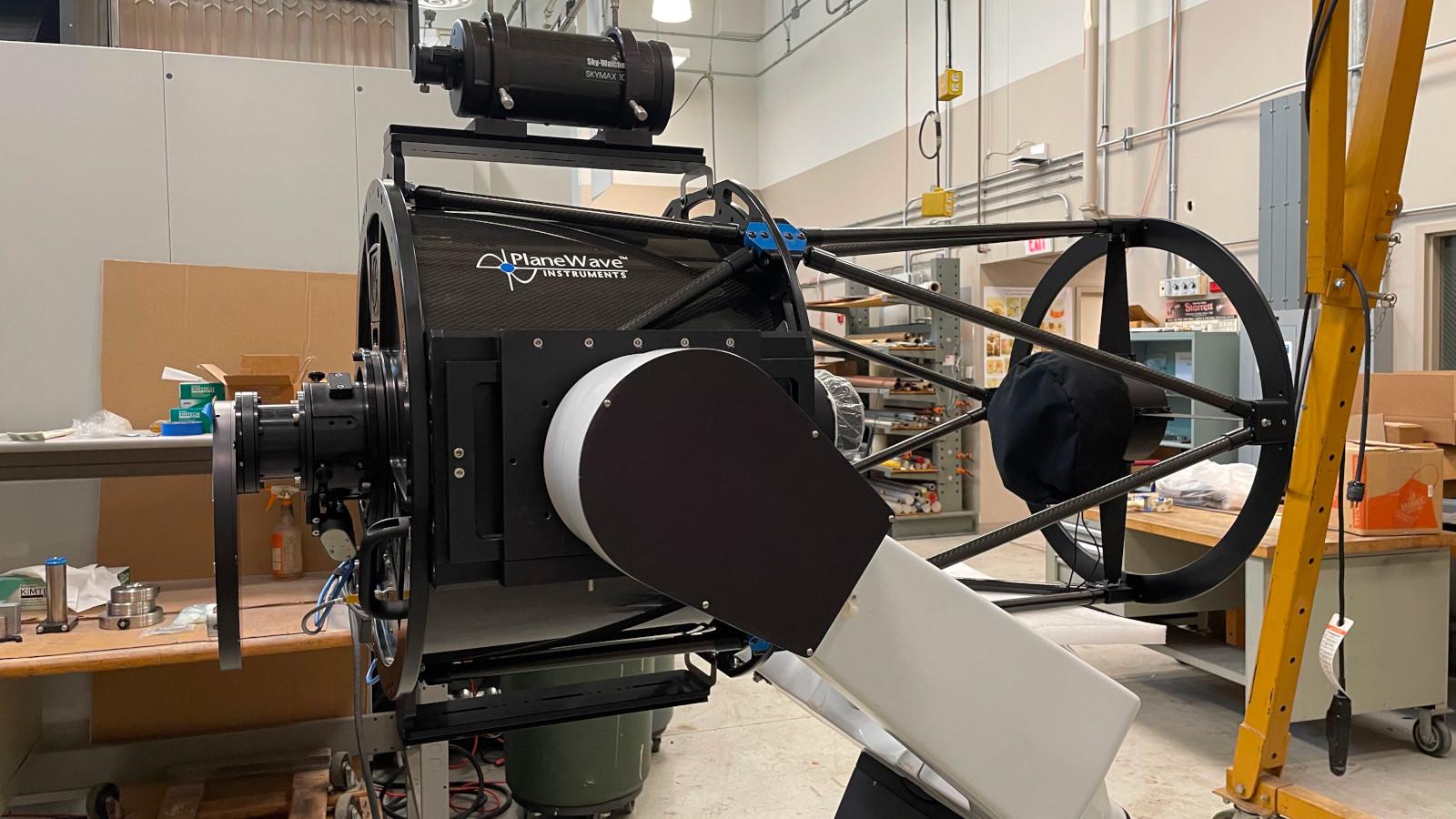DEdicated MONitor of EXotransits and Transients (DEMONEXT)
DEMONEXT, the DEdicated MONitor of EXotransits and Transient, is a 20-inch (0.5-m) robotic telescope using a PlaneWave CDK20 telescope on a Mathis instruments MI-750/1000 fork mount. DEMONEXT is equipped with a 2Kx2K CCD imager and a 10-position filter wheel with an electronic focuser. DEMONEXT can operate in a continuous observing mode and achieve 2-4 mmag raw, unbinned, precision on bright V < 13 targets with 20–120 second exposures, and 1 mmag precision with binning on 5–6 minute timescales. DEMONEXT maintains sub-pixel (<0.5 pixels) target position stability on the CCD over 8 hours in good observing conditions, with degraded performance in poor weather (<1 pixel). DEMONEXT achieves 1%–10% photometry on single-epoch targets with V < 17 in 5 minute exposures, with detection thresholds of V~21.
DEMONEXT ended its run at Winer Observatory in early 2022 and was returned to OSU. In 2024 we began a project to refurbish and reboot DEMONEXT for redeployment at a new telescope hosting site. The renovations include a new CCD camera and guide telescope/sensor system, cleaning and realigning the optics, and an updated computer control system and advanced robotic software development. This is a student-level project that is led by a graduate and undergraduate student at OSU with supervision from the ISL.
Instrument Specification
- Project type: Robotic Telescope System
- Telescope: 0.5m f/6.8 PlaneWave CDK20 Corrected Dall-Kirkham
- Mount: Mathis MI750/1000 fork mount
- CCD Camera: FLI PL23042 2Kx2K
- Field of View: 30.7x30.7 arcminutes
- Filter Wheel: FLI CFW-3-10 10-position filter wheel, 50mm square filters
- Filters: Bessel BVRI, SDSS griz, whitelight, and diffuser
- Additional Systems: SkyWatcher Skymax 102mm Maksutov guide scope + ZWO ASI423mm CMOS camera; Hedrick electronic focuser
- Observatory Sites:
- Winer Observatory, Sonoita, AZ, USA (2016-2022)
- TBD starting in 2025
- Years active: 2016-present
- Reference:
- Winer system: Villanueva et al. 2018, PASP, 130, 5001; Villanueva et al. 2016, SPIE, 9906E, 2L
Instrument Facts
- DEMONEXT was part of the PhD dissertation of graduate student Steven Villanueva
- DEMONEXT was the successor to DEMONEX, an OSU robotic telescope that operated from 2008-2013
- A novel science-guiding mode is used to achieve sub-pixel guiding precision for many hours of continuous time-series imaging.
- The DEMONEXT automated queue observing system produced 143 planetary candidate transit light curves for the KELT collaboration and 48 supernovae and transient light curves for the ASAS-SN supernovae group in the first year of operation
- While designed for exoplanet follow-up, ancillary science projects include Galactic microlensing, active galactic nuclei, stellar variability, and stellar rotation
- Jointly operated by OSU and Vanderbilt from 2016 until retirement in 2022
- DEMONEXT returned to OSU in 2023 and is currently being renovated for deployment at a new observatory site in spring 2025.
Instrument Team
Steven Villanueva (Original Project Lead)
Scott Gaudi (PhD co-advisor)
Richard Pogge (PhD co-advisor)
Jason Eastman (technical advisor)
Jon Shover (instrument maker)
Dan Pappalardo (electronics engineer)
Mark Derwent (mechanical engineer)
Keivan Stassun (Vanderbilt collaboration lead)
Mark Trueblood (Winer Observatory)
Patricia Trueblood (Winer Observatory)
Eleonora Julmy (OSU undergrad - 2024 reboot)
Kylee Carden (OSU grad student - 2024 reboot)





